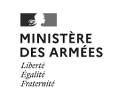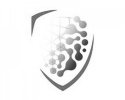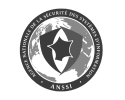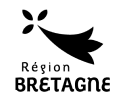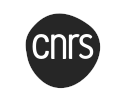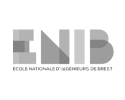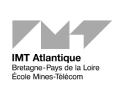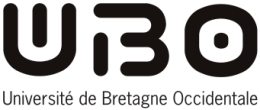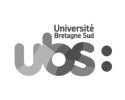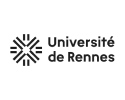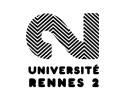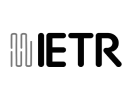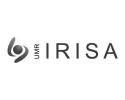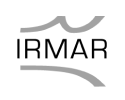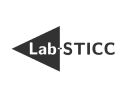Signatory institutions
State institutions
-
Ministère des armées
In the era of globalization, the concepts of security and conflicts have evolved. This observation necessitates strategic realignments in the use of defense resources both within and outsde our country
The national defense and security strategy is currently defined by five key strategic functions : knowing and anticipating, preventing, dissuading, protecting, and intervening.
Within this framework, the role of the Ministry of the Armed Forces is to ensure the protection of territory, population, and French interests. It also fulfills other missions within context of international (NATO) or regional (European defense) agreements and treaties.
Beyond these core missions, the Ministry of the Armed Forces is also involved in public service tasks. Its human and material resources support or supplement actions of other ministries, both in daily operations and during emergencies, both domestically and abroad.
-
Direction générale de l’armement
The General Directorate of Armament (DGA) is a force of expertise, testing, and engineering within the Ministry of the Armed Forces. Its missions include equipping the armed forces independently, preparing the future of defense systems, promoting European cooperation, and supporting exports.
Since its creation in 1961 by General de Gaulle, the DGA conducts an average of over a hundred armament operations annually, covering the full range of technologically advanced equipment necessary for the French armed forces to carry out their missions. It oversees the entire lifecycle of weapon systems and ensures the future of defense systems, prioritizing France’s independence and strategic autonomy. The DGA’s technical expertise, unique in France and Europe, contributes to the success of our military’s technological advancements.
The DGA’s ambition is to lead the design of defense systems, armament operations, and the structuring of the defense industry for the benefit of the armed forces. With 18 sites in France, approximately 10 000 civilian and military personnel (including nearly 60% who are executives, engineers or experts), and an international network of collaborators, the DGA operates in all defense domains (land combat, naval, aerial combat, electronic communication and information systems, deterrence, space, cybersecurity, and robotics).
-
Agence de l'innovation de défense
Placed under the responsibility of the Director of the Armament General Directorate (DGA) : (DGA), the French Defence Innovation Agency (AID) was created on 1 September 2018. It federates the various players in the French ministry of Defence and the actions that contribute to Defence innovation in France. Its ambition is to transform innovation projects into products and services for the benefit of the end-users whatever their areas: conduct of operations, equipment, support, operations, administration. To achieve this, it aims to :
- Prepare and implement ministerial policy on innovation;
- Steering and guiding the strategies drawn up by the ministry's staff, directorates and services (EMDS), ensuring their overall coherence and participating in the associated budgetary work;
- Stimulating and capturing innovation from the civilian world, and developing new forms of innovation by bringing together the various players in the military and civil society;
- To manage the innovation programmes entrusted to it;
- Promote innovation and accelerate its deployment for the benefit of the Ministry's users;
- Developing and implementing the necessary partnerships and international cooperation with public and private players.
-
Agence nationale de la sécurité des systèmes d'information
Created in 2009, French Cybersecurity Agency (ANSSI) is the national authority for cybersecurity and cyberdefense. As a department of the Prime Minister's office, the Agency is attached to the General Secretariat for Defense and National Security (SGDSN). Its role is to protect the nation from cyber-attacks, and in particular operators of vital importance (OIV), operators of essential services (OES) and government agencies.
Regional authorities
Public research institutions
-
CentraleSupélec
CentraleSupélec is a public establishment of a scientific, cultural and professional nature (EPSCP) constituted in the form of a Large Establishment, under the joint supervision of the Ministry of Higher Education, Research and Innovation and the Ministry of Economy, Industry and Digital.
On January 1, 2015, CentraleSupélec was officially born, definitively uniting École Centrale Paris and Supélec, two major French engineering schools which have continued, since 2009, to intensify their collaborations and common achievements in their fields of expertise. activity: initial training, continuing training and research.
Partners since the establishment of the joint competition in 1968, the two Schools were naturally led to join forces, sharing the same values of excellence, innovation, entrepreneurship, international openness and leadership. By becoming CentraleSupélec, they complement each other in their fields of research to cover all Engineering and Systems Sciences.
Today, with its 3 campuses in Paris-Saclay, Metz and Rennes, and its campus entirely dedicated to research, CentraleSupélec has more than 5,000 students and 500 teachers and teacher-researchers interacting with its international network, 3 schools abroad (China, India and Morocco) and 2 international laboratories (ILLS in Canada and SONDRA in Singapore).
The School is a partner of 176 foreign universities and 140 companies.
-
Centre National de la Recherche Scientifique
A major player in basic research worldwide, the National Centre for Scientific Research (CNRS) is the only French organisation active in all scientific fields.
Its unique position as a multi-specialist enables it to bring together all of the scientific disciplines in order to shed light on and understand the challenges of today's world, in connection with public and socio-economic stakeholders.
Together, the different sciences contribute to sustainable progress that benefits society as a whole.
-
École nationale d'ingénieurs de Brest
Located in Brest, at the western tip of France in Brittany, ENIB is one of the highly selective French Grandes Ecoles d’Ingénieurs.
It is a graduate school of engineering with a rigorous selection procedure and a high-level teaching programme.
The Brest National School of Engineering is accredited by the Commission des Titres d’Ingénieur (CTI), the independent organisation responsible for the accreditation of engineering curricula and higher education institutions in the field of engineering.
As part of the Brest-Iroise technology cluster, which houses leading laboratories and innovative companies, ENIB enjoys an exceptional setting right by the sea.
-
École normale supérieure de Rennes
Founded in 1994, ENS Rennes was initially created as a satellite campus of ENS Cachan in Brittany. Since 2013 ENS Rennes has been an independent institution specializing in Law, Economics, Management, Computer Science, Telecommunications, Mathematics, Mechatronics, Sports Science and Physical Education.
The highly selective admission process (recruiting 1 out of every 1000 high school graduates per year) and strong research orientation (80% of all Master graduates pursue to PhD) makes ENS Rennes one of the top ranked and highly competitive Grandes Ecoles in France.
The school educates students, through high-level scientific and cultural training, who aspire to a career in fundamental or applied scientific research, university teaching and secondary education and, more generally, for working for State and local authorities and State public establishments or enterprises.
Each year, around 400 students follow Master’s Degree programmes jointly accredited with the Université de Rennes 1 and the Université Rennes 2. Over 90% of its students pass the Agrégation examination and 70 % continue their studies by completing a PhD.
-
École nationale supérieure de techniques avancées Bretagne
Situated in Brest, this state establishment works in close relationship with numerous industrial8 and academic partners in France and abroad. Its activities contribute to innovation in numerous fields of application: the maritime, defense and more generally hi-tech sectors (transport, aerospace, energy, digital technologies, research…).
Together with the Ecole Polytechnique, ENSTA Paris and ISAE-SUPAERO, ENSTA Bretagne is part of the group of engineering schools governed by the Direction Générale de l'Armement (DGA) (Defense Procurement and Technology Agency) of the Ministry of Armed Forces. They share the high requirements and excellence on which their solid international reputation has been built.
Moreover, ENSTA Bretagne sets the standard in training armament research and technology engineers (IETA). They represent 20% of the students (engineering program) on campus and prepare to design and manage major defense programs at the DGA and in companies in this field.
-
IMT Atlantique
IMT Atlantique is one of the top 10 engineering schools in France, and one of the top 400 universities in the world in THE World University Ranking.
It is a general engineering grande école financed by the Ministry of Economy, Finance and Industrial and Digital Sovereignty, and the first Institut Mines Télécom "Mines-Telecom" Technological university, founded on January 1st, 2017 from the merger of Mines Nantes and Télécom Bretagne.
IMT Atlantique is:
- a Higher Education Institution with first-rate research potential, internationally recognized for its research (present in 5 disciplines in the Shanghai, QS and THE rankings).
- a resolutely multi-site institution reflecting the world in which we live. An institution with a strong local presence, and a commitment to contributing to local development
- an institution which is aware of its environmental and societal responsibility. In 2019 it was awarded the sustainable development & social responsibility accreditation.
- and finally, an institution that trains executives capable of understanding and mastering the complexity of the highly interconnected systems of the future, by combining their knowledge of the systems with that of the networks that link them.
-
Institut national de recherche en informatique et en automatique
Inria is the French national research institute for digital science and technology.
World-class research, technological innovation and entrepreneurial risk are its DNA.
In 215 project teams, most of which are shared with major research universities, more than 3,900 researchers and engineers explore new paths, often in an interdisciplinary manner and in collaboration with industrial partners to meet ambitious challenges.
As a technological institute, Inria supports the diversity of innovation pathways: from open-source software publishing to the creation of technological startups (Deeptech).
-
Institut national des sciences appliquées de Rennes
Created in 1966, INSA Rennes is a member of the INSA Group, the leading French network of state graduate and post graduate engineering schools, composed of 7 schools in France and 6 partner schools.
Research and innovation are the key elements of INSA, which benefits from the expertise of its 168 professors and lecturers. With six laboratories of international renown, three technological platforms and numerous industrial partners, INSA Rennes stands out for two poles of excellence: Information, Communication Science & Technologies / Materials, Structures & Mechanics.
With around 2 000 students, INSA Rennes is a prestigious “Grande École”, a graduate and post graduate school. INSA Rennes delivers high level scientific training conforming to the highest official European standards:
- Masters of Science and Engineering (the French “diplôme d’ingénieur”) : we offer a 5 five year integrated MSc.-Eng. Program.;
- Masters of Science;
- Doctorates (PhD).
As a major public engineering school, the institute's vocation is to train the engineers of tomorrow, destined to practice in a constantly evolving society, heart of innovative and creative companies. The ambition of INSA Rennes is to inaugurate a new era for engineering and to develop and offer sustainable and responsible engineering contributing to sustainable human progress.
-
Université de Bretagne occidentale
As a public scientific, cultural and professional institution, UBO's main missions are to contribute to the development of research and to raise the scientific, cultural and professional level of the nation and its individuals.
It is also to foster regional and national growth and economic development, as well as to facilitate the implementation of the national employment policy. UBO also helps to reduce social and cultural inequalities. With its 23,000 students, 1,300 academics and 900 administrative and technical staff who are part of its daily life, UBO has managed to be a local university with national and international influence.
The UBO's 36 research units develop areas of expertise in collaboration with Breton partners and major national research organisations (CNRS, IFREMER, IRD, INSERM, INRAe).
As a result, UBO is involved in a number of major research programmes, including those funded by the national "Investissement d'Avenir" programme, as well as European research programmes, and has forged interregional and international collaborations.
In the space of a year, UBO has risen from 11th to 5th place in the Shanghai World Ranking in oceanography, out of 2,500 competing higher education institutions. UBO has also made its debut in the Times Higher Education 2024 league table, placing in the top half of the 1,900 universities ranked.
-
Université de Bretagne Sud
We are a multidisciplinary institution and we offer undergraduate, graduate and PhD courses in many fields: literature and languages, social sciences, engineering, computer sciences, mathematics, law, economics, business. We are proud to nurture students' initiatives and believe in a strong link between students and the faculty. We value student life, welfare and innovation.
We prepare students for future employment via tutored internships, apprenticeships, practical work and field trips.
Finally, we boast excellent success rates that we believe are due to our teaching which is closely linked with the research undertaken by our research teams.
the University of Southern Brittany bases its teaching and research strategy on 4 promising themes in terms of innovation, economic development, and professional integration.
The Sea and the coastline, the Industry of the future, Cyber and data intelligence, the Environment, health and disability constitute its transversal centres of excellence that amalgamate 500 lecturers-researchers, 10,000 students and a vast network of businesses and public partners With over 130 exchange programs worldwide, UBS is open to the world and other cultures.
UBS is ideally located on the coast of Brittany and benefits from campuses at three locations: Lorient, Vannes and Pontivy in the heart of Southern Brittany.
-
Université de Rennes
Created on 1 January 2023, the University of Rennes brings together six faculties and five research clusters, as well as the French School for Public Health Studies (EHESP), Rennes School of Chemistry (ENSCR), l’École normale supérieure Rennes (ENS Rennes), Rennes Institute of Political Studies (Sciences Po Rennes), and the National Institute of Applied Sciences of Rennes (INSA Rennes).
With its broad spectrum of training and research, as well as the advantages and distinctive features of its affiliated Grandes Écoles, the University of Rennes is striving to meet the major societal challenges of a world in transition, in particular in the fields of the environment, global health and digital technology. It fosters pedagogical innovation, providing its 35,000 students with an enriching experience, in addition to successful professional integration by promoting their freedom and collective success as individuals.
Its role as a leading actor in lifelong learning also places it in a position of responsibility toward society, making it a key driver for the socioeconomic and cultural development of the territory.
-
Université Rennes 2
Rennes 2 University is the largest center for research and higher education in the arts, humanities, languages and social sciences in the west of France. It was founded in 1969, on the foundations of the former Faculty of Letters of the University of Rennes, whose origins date back to the creation of the ducal University of Brittany in Nantes in 1460.
Associated with the experimental public institution “Université de Rennes”, created in 2023, Rennes 2 University is committed to fostering a collaborative approach within the Rennes higher education ecosystem, placing a strong emphasis on interdisciplinarity in joint projects.
Rennes 2 University brings together 22,000 students in 24 academic departments, as well as 1,400 staff, including 850 teachers and teacher-researchers. It has 21 research units, including 5 mixed CNRS units.
A source of dynamism and creativity, Rennes 2's teaching and research programs enable its student and scientific communities to play an active role in the major issues facing society. The university is also the hub of a rich and constantly renewed cultural life, thanks to the initiatives and activities of its community, its facilities and its partnerships with major cultural venues in the city and region.
Research laboratories
-
Institut d'électronique et des technologies du numérique
The IETR is a public research laboratory specialising in electronics and digital technologies.
Our work addresses a wide range of scientific challenges, mainly related to digital infrastructures and communications, mobility, material cybersecurity, energy, the environment, the industry of the future and health, well-being and physical activity.Located in Brittany and Pays de la Loire, the IETR brings together more than 350 staff from the 5 institutions and organisations that sponsor the laboratory (CNRS, CentraleSupélec, INSA Rennes, Nantes University and the University of Rennes); the IETR also welcomes researchers and teacher-researchers from other institutions and associates under hosting agreements.
The IETR's main areas of expertise range from digital materials to systems. They cover the following main disciplinary fields:
- Microwave antennas and devices from a few MHz to sub-THz;
- EMC and electromagnetics for biomedical applications;
- Multifunctional materials for miniaturisation, reconfigurability, communications, energy recovery and storage;
- Microtechnologies and micro-sensors in two areas (low-temperature silicon, organic electronics) for the study of circuits and micro-sensors;
- Digital communications systems and associated processing, as well as connected electronics and embedded systems;
- Remote sensing, multimodal imaging and propagation problems (indoor, outdoor, propagation in complex environments);
- Image analysis and processing (compression, prototyping, cryptography and content security, multimodal analysis, emotional analysis);
- Automatic control (predictive control, adaptive control, energy management, etc.).
-
Institut de l'Ouest : droit et Europe
Institut de l’Ouest: Droit et Europe /Western Institute : Law and Europe
IODE is a research laboratory specializing in law with the status of joint research unit (UMR 6262) of the University of Rennes and the French National Centre for Scientific Research (CNRS). IODE has 73 full members (5 CNRS researchers, 68 professors and lecturers), 47 associate researchers and 51 PhD students. Its activities focus on the 5 following areas: European Integration, Protections of Persons, Environment, Responsibility and Security and Theory and History of Legal Systems. The research carried out in these 5 areas feeds into the cross-disciplinary cluster: “Law, Digital and Science”.
Drawing on this expertise, the individual and collective work of IODE researchers and the scientific events they organise make an essential contribution to the debate on legal issues and the framework for digital technology and cybersecurity, whether from the perspective of public law, private law or fundamental rights. Particularly identified in these areas, IODE participates in research projects that are part of Brittany's digital ecosystem, including PhD theses and national and international projects involving international partners.
IODE also has well-established expertise in supporting interdisciplinary projects in the digital field, using the expertise of its researchers to contribute to work beyond legal disciplines, this multidisciplinary dialog being particularly necessary in the digital field.
-
Institut de recherche en informatique et systèmes aléatoires
IRISA is today one of the largest French research laboratory (more than 850 people) in the field of computer science and information technologies.
Structured into seven scientific departments, the laboratory is a research center of excellence with scientific priorities such as bioinformatics, systems security, new software architectures, virtual reality, big data analysis and artificial intelligence.Located in Rennes, Lannion and Vannes, IRISA is at the heart of a rich regional ecosystem for research and innovation and is positioned as the reference in France with an internationally recognized expertise through numerous European contracts and international scientific collaborations.
Focused on the future of computer science and necessarily internationally oriented, IRISA is at the very heart of the digital transition of society and of innovation at the service of cybersecurity,health, environment and ecology, transport, robotics, energy, culture and artificial intelligence.
IRISA is a joint-venture resulting from the collaboration between nine institutions, in alphabetical order: CentraleSupélec, CNRS, ENS Rennes, IMT Atlantique, Inria, INSA Rennes, Inserm, Université Bretagne Sud, Université de Rennes.
From this collaboration is born a force that comes from women and men who give the best of themselves for fundamental and applied research, education, exchanges with other disciplines, transfer of know-how and technology, and scientific mediation. -
Institut de recherche mathématique de Rennes
IRMAR is a multi-site and multi-tutelle unit that brings together almost all the mathematicians in the Rennes region (approximately 230 members, including approximately 40 PhD students). It is one of INSMI's largest mathematics laboratories and one of the leading laboratories at the University of Rennes. It develops a wide range of topics within eight research teams. IRMAR members publish several hundred research articles each year. Several of them are also authors of books and reference works. This high level of scientific activity has enabled IRMAR to gain an international reputation, as demonstrated by the fact that it welcomes around thirty colleagues from foreign universities each year for varying periods of time and organises numerous conferences and meetings. This reputation enables IRMAR to attract several foreign postdoctoral students each year and to recruit new permanent members on a regular basis.
IRMAR's library is an essential working tool for all members of the unit. It is the largest mathematics library in the North West (32,000 books and 417 periodical titles). It offers an extensive print collection and regularly updated digital resources.
IRMAR is a co-founder of the Labex Centre Henri Lebesgue and is heavily involved in the Annales Henri Lebesgue, a non-profit, open-source academic journal.
-
Laboratoire des sciences et techniques de l’information, de la communication et de la connaissance
The Lab-STICC is a research unit which gathers 650 people on average carrying activities of the Lab-STICC by covering strong scientific themes in the field of ICTS.
It has a proven capacity to cover a broad scientific spectrum around digital sciences, and in particular with this ability to address various disciplinary fields (Information Theory, Waves & Materials, Embedded Electronics and Computing, Data Sciences, Communication and Signal Detection, Human-Machine Interfaces...) following multiple themes/application sectors: maritime environment, communicating objects, defense, space, health, security, robotics...
The Lab-STICC's motto "From sensors to knowledge: communicating and deciding" initially underlined the intention to give "meaning" to the "sign", in terms of interpretations and increased value with respect to treatments based on a signal in all its forms.
Today, this motto is even more reinforced by the importance of data, which is becoming the vector of technological and scientific innovation, undeniably boosted by the major advances in science in the field of cognition and artificial intelligence.
The ability of the Lab-STICC to establish this link between the lower and upper layers (up to Human-Complex Systems cooperation) is an asset to mobilize its scientific strengths, and federate research around the societal challenges such as digital, environment, energy.
The laboratory is structured around 9 research departments, bringing together 26 teams.
